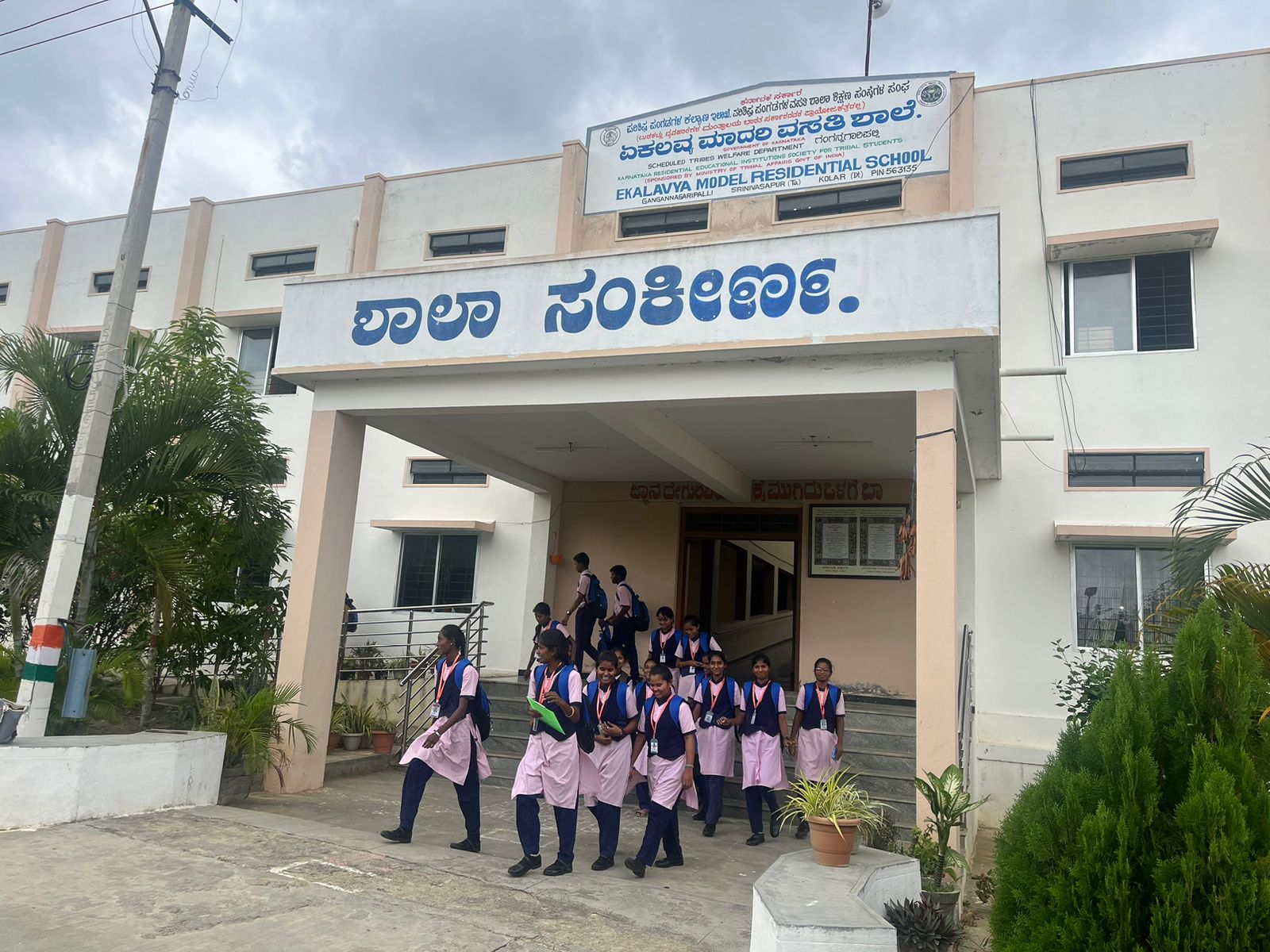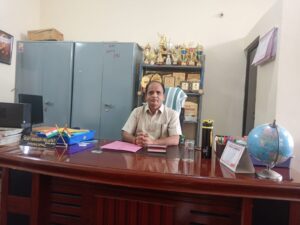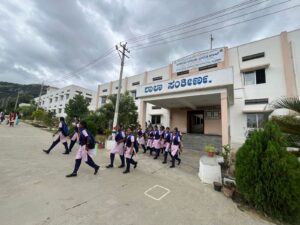Centralised recruitment has led to discontent among the newly hired staff in EMRS of Kolar where teachers need a mediator to communicate.
Published Aug 10, 2024 | 2:00 PM ⚊ Updated Aug 10, 2024 | 2:00 PM

EMRS School situated in Gangannagaripalli in Srinivasapur Taluka in Kolar, Karnataka. (Deeksha Devadiga/South First)
South First brings you a series of ground reports from across Southern states on the impact of the Union government’s decision to impose proficiency in Hindi as a mandatory yardstick for teachers’ recruitment to Eklavya schools. These schools are meant to focus on education for children from tribal communities. The language barrier is stressing parents and students. Worse, Union government’s move is rendering native teachers jobless. This ground report from Kolar, Karnataka, is the third part in the series. Read part 1 and part 2 here.
The Union government’s decision centralising the recruitment to Eklavya Model Residential Schools (EMRS) has thrown up significant challenges, particularly due to a norm making proficiency in Hindi mandatory for teaching and non-teaching staff.
The policy shift aimed at addressing staff shortage and standardise recruitment has resulted in a wave of transfer requests from the appointed employees, who are grappling with language and cultural barriers at places where they are posted.
Previously, staff recruitment for the Ministry of Tribal Affairs’ flagship Eklavya schools was handled at the state level, allowing for a nuanced understanding of local languages and cultures.
However, in the 2023 Budget Session, Finance Minister Nirmala Sitharaman announced that staffing responsibilities would be shifted to the National Education Society for Tribal Students (NESTS), tasked with filling 38,000 positions across over 400 Eklavya schools nationwide.
Centralised hiring process has led to significant discontent among the newly hired staff, particularly those from Hindi-speaking states who have been posted in southern regions where the language, food, and cultural practices are unfamiliar to them.

Principal Prajapati, originally from Uttar Pradesh, finds it challenging to communicate effectively with the local Kannada-speaking community. (Deeksha Devadiga/South First)
South First visited one such EMRS School situated at Gangannagaripalli in Srinivasapur Taluka in Karnataka’s Kolar.
Appointed as the principal on 1 July 2024, Vijay Prakash Prajapati was about to embark on a journey that would test his resilience and adaptability in ways he had never imagined.
“Initially, when I came here, we had to figure out what to do because of the language problem,” he said, reflecting on his initial days at the rural school.
The linguistic divide was palpable, with Prajapati, originally from Uttar Pradesh, finding it challenging to communicate effectively with the local Kannada-speaking community.
Prajapati acknowledged the difficulties. “We sometimes take help from the peon and the non-teaching staff to help translate and act as a mediator when speaking to students. They even help us speak to the parents in case of emergencies.”
Krishna, a PGT Economics teacher from Haryana, joined the school on 14 June 2024. “Sometimes we face problems communicating with parents because they don’t know English or Hindi,” she said.
“It would have been easier if we were posted in North India,” the teacher said.
Krishna’s experience underscored a significant point: While the students understood Hindi and English to some extent, speaking and fluently communicating in these languages remained a challenge.
This linguistic barrier was not just an inconvenience; it has been a daily obstacle that requires creative solutions and a patient approach.
Deepti, a PGT Science teacher from Gorakhpur, Uttar Pradesh, joined the school around June. She is viewing the language barrier not as a hindrance but as an opportunity.
She believed that young minds were highly adaptable and capable of learning multiple languages. “Being a polyglot is beneficial,” she said, emphasising the cognitive advantages for students exposed to various languages.
However, she acknowledged that adults, including teachers, were facing a steeper learning curve.

Students are grappling to understand the subjects due to the language barrier. (Deeksha Devadiga/South First)
KV Gurumurthy, a Maths guest teacher who has been with the school since its inception in 2017, highlighted a critical issue. “We gave the ERMS recruitment exams but did not clear as Hindi was one of the mandatory subjects. We couldn’t clear the Hindi paper.”
Similarly, Sudha, another guest teacher, noted, “Since the Centre has taken over, the quality of education might improve. Students will receive better resources, but the teachers recruited come with a language barrier.”
Ramesh, a Kannada guest teacher, shared his approach to overcoming these barriers: “I use Telugu and Kannada to communicate with students because they understand better when communicated in the languages they speak.”
He also pointed out that students initially faced issues understanding the new teachers but had no choice but to adjust to the changes.
The challenges are not limited to the classroom. Ramesh said. “Parents have expressed their concerns regarding the language barriers with us. We can only assure them that we are doing our best to teach their kids.”
Despite these efforts, the situation remains complex. Many teachers and students have expressed a preference for having at least one local teacher to ease communication and cultural understanding.
The lack of local language proficiency among principals has also been a concern. “Out of 12 EMRS in Karnataka, 11 of them have a principal who doesn’t speak or understand Kannada,” Sudha said.
The centralisation of recruitment for EMRS was well-intentioned, aimed at addressing critical shortages and standardising educational quality. However, the policy’s implementation underscored the importance of considering local contexts and cultural sensitivities.
To mitigate these challenges, additional support systems for both teachers and students are crucial. Language training for teachers, cultural orientation programmes, and enhanced community engagement could help bridge the gaps.
Ultimately, the success of EMRS depends on balancing national standards with local realities, ensuring that tribal students receive a quality education that respects and incorporates their linguistic and cultural heritage.
Prajapati was optimistic. “I will do my maximum for this school.” His dedication, along with that of his colleagues, will be key in overcoming the initial hurdles and creating a thriving educational environment for all.
(Edited by Majnu Babu)
(South First is now on WhatsApp and Telegram)
